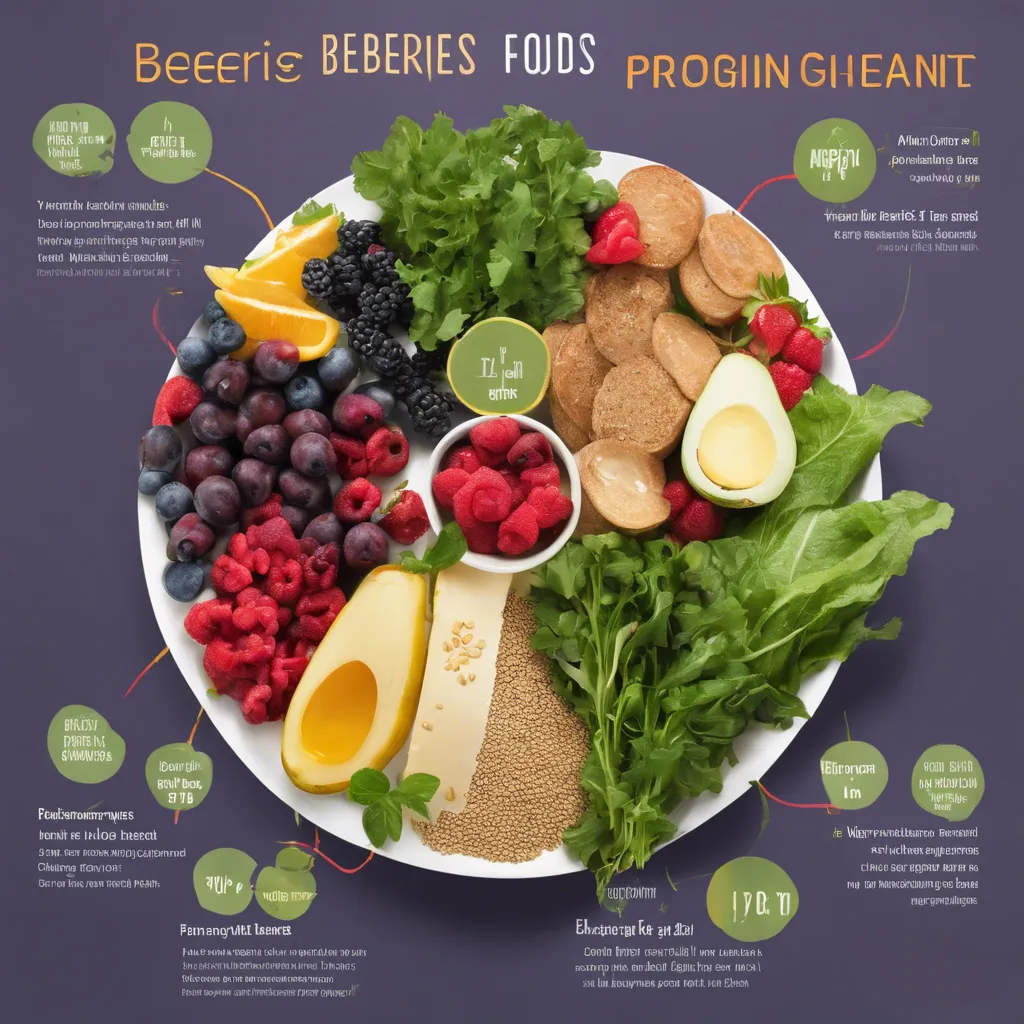Table of contents
- Demystifying the Glycemic Index: Unraveling its Effects on Blood Sugar
- The Incredible Benefits of Low-Glycemic Eating for Managing Blood Sugar
- Expert Tips for Successfully Integrating Low-Glycemic Foods into Your Daily Diet
- Tasty and Nutritious Meal Ideas for a Low-Glycemic Diet
- Achieve Optimal Blood Sugar Levels with These Lifestyle Adjustments
- Proven strategies for managing blood sugar and diabetes
In today's fast-paced world, maintaining stable blood sugar levels is essential for overall health. One effective approach to achieving this is through low-glycemic eating. This guide will delve into the concept of low-glycemic eating, explain its benefits for blood sugar health, and provide practical tips for incorporating it into your daily life. Get ready to take control of your blood sugar levels and experience improved well-being.
Demystifying the Glycemic Index: Unraveling its Effects on Blood Sugar
The glycemic index (GI) is a measure of how quickly carbohydrates in a food are digested and converted into glucose, resulting in a rise in blood sugar levels. Understanding the GI can help individuals make informed dietary choices to manage blood sugar levels effectively.
- The GI ranks carbohydrates on a scale from 0 to 100 based on their effect on blood sugar levels.
- Carbohydrates with a high GI (above 70) are digested rapidly, causing a quick spike in blood sugar levels.
- In contrast, carbohydrates with a low GI (below 55) are digested and absorbed more slowly, resulting in a more gradual increase in blood sugar levels.
- The GI is influenced by several factors, including the type of carbohydrate, the presence of fiber and fat, and the food's processing and cooking methods.
- Consuming foods with a high GI can lead to a rapid rise in blood sugar levels, potentially causing a sudden energy crash and increased hunger.
- On the other hand, opting for foods with a low GI can help maintain steady blood sugar levels, promote satiety, and provide sustained energy.
- The GI can be a useful tool for individuals with diabetes or those aiming to lose weight, as it can help them make smart carbohydrate choices.
- It is important to note that the GI should not be the sole determining factor in food choices, as other nutrients and portion sizes also need to be considered.
- The concept of the glycemic load (GL), which takes into account both the GI and the amount of carbohydrates in a serving, provides a more comprehensive measure of the impact on blood sugar levels.
The Incredible Benefits of Low-Glycemic Eating for Managing Blood Sugar
Low-glycemic eating is a dietary approach that focuses on consuming foods that have a minimal impact on blood sugar levels. By choosing low-glycemic foods such as whole grains, fruits, vegetables, and lean proteins, individuals can prevent rapid spikes and drops in blood sugar. This helps stabilize blood sugar levels, promoting overall health and reducing the risk of developing type 2 diabetes. Low-glycemic eating also aids in weight management as it keeps individuals feeling fuller for longer periods. Additionally, this approach improves energy levels and enhances the body's ability to utilize insulin effectively.
Expert Tips for Successfully Integrating Low-Glycemic Foods into Your Daily Diet
Are you looking to incorporate low-glycemic foods into your daily diet? Understanding how to identify and choose these foods can help you maintain stable blood sugar levels, support weight management efforts, and promote overall health. Here are some expert tips to help you successfully integrate low-glycemic foods into your diet:
-
Understanding the Glycemic Index
The glycemic index (GI) is a numerical scale that ranks carbohydrates based on how quickly they raise blood sugar levels. Foods with a high GI value (70 or greater) cause a rapid spike in blood sugar, while those with a low GI value (55 or lower) produce a slower and more gradual increase.
-
Focus on Whole Foods
Choose whole foods like fruits, vegetables, whole grains, and legumes that are minimally processed. These foods tend to have a lower glycemic load and provide more nutrients, fiber, and antioxidants compared to processed options.
-
Include Fiber-Rich Foods
Fiber slows down the digestion and absorption of carbohydrates, leading to a more gradual rise in blood sugar levels. Look for foods that are rich in soluble and insoluble fiber, such as oats, barley, beans, lentils, and vegetables.
-
Opt for Lean Proteins
Incorporate lean proteins like chicken, turkey, fish, tofu, and legumes into your meals. Proteins help slow down the digestion and absorption of carbohydrates, reducing their impact on blood sugar levels.
-
Combine Foods Wisely
Pair high-glycemic foods with low-glycemic foods to balance their effects on blood sugar. For example, accompany a starchy food like rice or pasta with vegetables, protein, and healthy fats to lower the overall glycemic load of the meal.
-
Read Food Labels
When purchasing packaged foods, read nutrition labels to check the glycemic index or glycemic load. Look for products with lower values and avoid those with added sugars or refined carbohydrates.
-
Work with a Registered Dietitian
Consulting with a registered dietitian who specializes in diabetes or glycemic control can provide personalized guidance and support. They can help you create a balanced meal plan and navigate food choices that suit your individual needs.
Tasty and Nutritious Meal Ideas for a Low-Glycemic Diet
If you're looking for delicious and healthy meal ideas that are low on the glycemic index, you're in for a treat! A low-glycemic diet focuses on consuming foods that have a low impact on blood sugar levels, making it a great option for those looking to maintain stable blood sugar, lose weight, or manage diabetes. Here are some tasty and nutritious meal ideas to get you started:
-
1. Cauliflower Rice Stir Fry
Replace high-glycemic white rice with cauliflower rice for a nutrient-packed and low-carb stir fry. Add in your favorite vegetables and lean protein for a complete and satisfying meal.
-
2. Grilled Salmon with Roasted Vegetables
Salmon is not only delicious but also rich in omega-3 fatty acids. Pair it with a medley of colorful roasted vegetables like bell peppers, zucchini, and broccoli for a well-balanced and low-glycemic meal.
-
3. Greek Salad with Grilled Chicken
Enjoy a refreshing Greek salad with crisp lettuce, cucumbers, tomatoes, olives, feta cheese, and a grilled chicken breast for added protein. The combination of fresh ingredients makes it a tasty and low-glycemic option.
-
4. Quinoa Stuffed Bell Peppers
Fill bell peppers with a mixture of cooked quinoa, black beans, corn, and spices for a flavorful and low-glycemic meal. Top with some melted cheese and bake until the peppers are tender and the filling is heated through.
-
5. Zucchini Noodles with Turkey Bolognese
Swap traditional pasta with zucchini noodles, also known as zoodles, for a low-carb alternative. Top it with a hearty and lean turkey Bolognese sauce for a satisfying and low-glycemic meal.
Achieve Optimal Blood Sugar Levels with These Lifestyle Adjustments
Regular physical activity plays a crucial role in managing blood sugar levels effectively.
-
Increased insulin sensitivity
Engaging in regular physical activity improves insulin sensitivity, allowing the body to use insulin more efficiently. This helps to control blood sugar levels and reduces the risk of developing insulin resistance.
-
Lower blood glucose levels
Physical activity helps to lower blood glucose levels by increasing glucose uptake by muscles. This allows the body to use glucose as a source of energy, preventing it from accumulating in the bloodstream and causing high blood sugar levels.
-
Weight management
Regular exercise aids in maintaining a healthy weight or achieving weight loss. Excess weight is often associated with insulin resistance and an increased risk of type 2 diabetes. By managing weight through physical activity, blood sugar control can be improved.
-
Improved cardiovascular health
Regular physical activity promotes a healthy cardiovascular system, reducing the risk of heart disease, which is common in people with diabetes. By improving overall cardiovascular health, blood sugar control is enhanced.
-
Stress reduction
Physical activity acts as a stress reliever, helping to reduce stress levels. High stress can contribute to elevated blood sugar levels in individuals with diabetes. Engaging in regular exercise helps to manage stress, promoting better blood sugar control.
Proven strategies for managing blood sugar and diabetes
Insights and recommendations from healthcare professionals provide valuable guidance for managing blood sugar and diabetes. Their expertise highlights proven strategies that can help individuals effectively control their blood sugar levels and lead a healthier life.
In conclusion, adopting a low-glycemic eating plan can be beneficial for individuals looking to maintain stable blood sugar levels and overall health. By choosing foods that have a minimal impact on blood sugar, such as whole grains, lean proteins, fruits, and vegetables, one can better manage their energy levels and reduce the risk of developing conditions like diabetes. It is important to remember that this dietary approach should be personalized and balanced with other healthy lifestyle choices, including regular exercise and portion control. Consultation with a healthcare professional or registered dietitian can further assist in tailoring an effective low-glycemic eating plan for individual needs.
Frequently asked questions related to blood sugar health
What is the glycemic index?
The glycemic index is a measurement of how quickly a food raises blood sugar levels. Foods with a high glycemic index are quickly digested and cause a rapid rise in blood sugar, while foods with a low glycemic index are digested more slowly and cause a slower, more gradual increase in blood sugar.
Are all carbohydrates bad for blood sugar health?
Not all carbohydrates are bad for blood sugar health. While foods with a high glycemic index can cause rapid spikes in blood sugar, there are also carbohydrates with a low or moderate glycemic index that are beneficial for blood sugar control. It's important to focus on consuming complex carbohydrates from whole food sources, such as fruits, vegetables, whole grains, and legumes, which provide essential nutrients and fiber.
How can low-glycemic eating be incorporated into a balanced diet?
Low-glycemic eating can be incorporated into a balanced diet by focusing on whole, unprocessed foods and making mindful choices about the types and portions of carbohydrates consumed. It's important to include a variety of low-glycemic foods such as non-starchy vegetables, whole grains, legumes, and lean proteins. Balancing carbohydrates with healthy fats and protein can also help slow down the digestion and absorption of glucose, resulting in a more stable blood sugar response.
Are there any drawbacks to low-glycemic eating?
While low-glycemic eating can be beneficial for blood sugar health, it is not the only factor to consider when it comes to overall health and nutrition. It's important to have a well-rounded diet that includes a variety of nutrient-dense foods from all food groups. Additionally, the glycemic index can vary depending on factors such as ripeness, cooking methods, and food combinations, so it's important to use it as a tool rather than a strict guideline.
What are some examples of low-glycemic foods?
Examples of low-glycemic foods include non-starchy vegetables (such as broccoli, cauliflower, and spinach), whole grains (such as quinoa, brown rice, and oats), legumes (such as lentils and chickpeas), nuts and seeds, and lean proteins (such as chicken, fish, and tofu). These foods are digested more slowly, resulting in a slower release of glucose into the bloodstream.
Why is low-glycemic eating important for blood sugar health?
Low-glycemic eating is important for blood sugar health because it helps to prevent spikes in blood sugar levels. Consistently high blood sugar levels can lead to insulin resistance and an increased risk of type 2 diabetes. By choosing low-glycemic foods, you can help keep your blood sugar levels stable and reduce the risk of developing these conditions.







